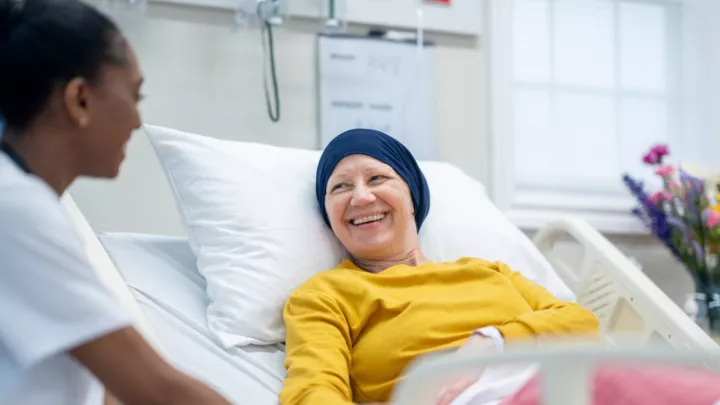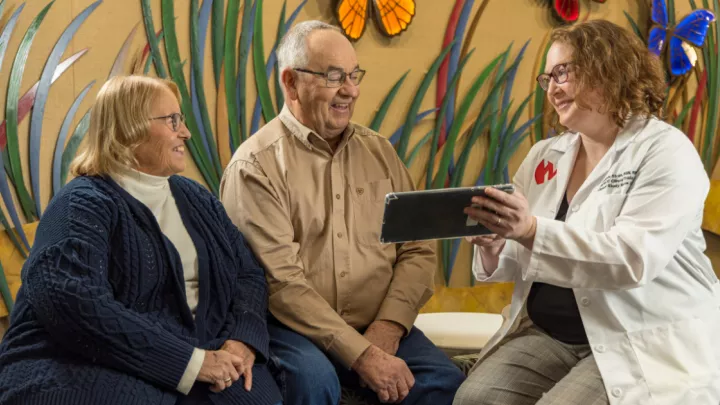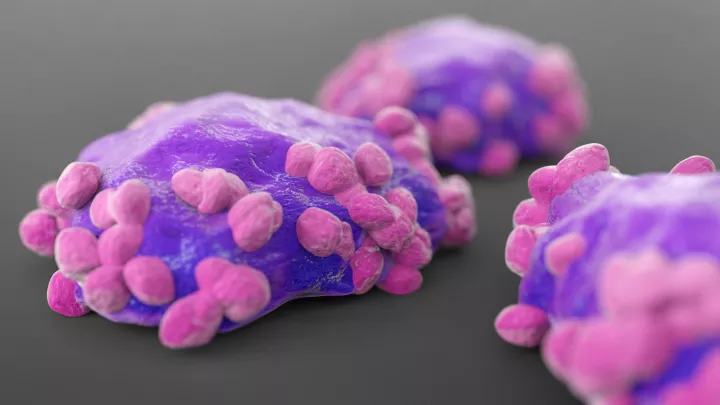Research study explores targeted therapy for recurrent high-grade glioma

Researchers are investigating a novel combination therapy that could offer hope for patients with recurrent high-grade glioma, a challenging form of brain cancer.
The phase 1 clinical trial combines abexinostat, a targeted therapy, with the chemotherapy drug temozolomide to determine side effects.
“We're trying to find the maximum-tolerated dose of abexinostat, together with what is already an accepted standard dose of temozolomide,” says Nicole Shonka, MD, medical neuro-oncologist and the study’s principal investigator. “We're also hoping to find an initial idea of how effective this will be in shrinking recurrent grade 3 and 4 gliomas.”
The study, which began in 2023, aims to enroll between nine and 18 patients, depending on observed side effects. Researchers are using a stepped approach to determine the optimal dosage.
“We have three different dose levels, and we enroll patients at one dose level and see how they do,” Dr. Shonka says. “Once we have enough data to know how those patients have done, we enroll the next patients at the next dose level, and so on.”
Abexinostat belongs to a class of drugs called histone deacetylase (HDAC) inhibitors. Unlike previous HDAC inhibitors used in glioma treatment, abexinostat targets specific HDACs upregulated in glioblastoma.
“This drug better matches the tumor’s molecular signature rather than just across-the-board suppressing all of the HDACs,” Dr. Shonka says, explaining why researchers are hopeful about its potential.
The combination therapy is not without risks. Both drugs can affect blood counts, with temozolomide primarily impacting platelets and abexinostat affecting white blood cells. Other potential side effects include constipation from temozolomide and changes in blood electrolytes from abexinostat.
Despite these challenges, it is hoped the targeted nature of abexinostat might lead to fewer overall side effects compared to traditional chemotherapies.
“Targeted therapies add the benefit of attacking specific things,” Dr. Shonka says. “You don't have the same kinds of toxicities, and hopefully, you don't have the same long-term detrimental side effects.”
While it’s too early to predict the long-term impact of this research, Dr. Shonka is cautiously optimistic about its potential.
“I think it would be very exciting to expand this into a bigger clinical trial and potentially see about using it up front for newly diagnosed patients,” she says.
The fact that abexinostat has already been studied in lymphoma patients could potentially accelerate its development for glioma treatment.
“There is the ability to fast-track it,” Dr. Shonka says. “It's already developed, and it's something that could quickly be made available.”
Clinicaltrials.gov NCT05698524
IRB number: 0809-22-FB







